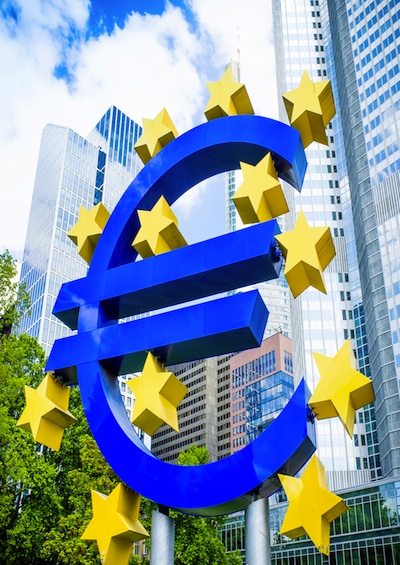The Eurozone “Soviet”?
Negative interest rates have a pernicious effect on human beings. They corrode the structures of society, culture and people’s mindsets, triggering widespread resignation and even nihilism.
November 2, 2019

Imagine an inverted universe – where the arrow of time is in reverse. As a result, the present is richer than the future. The defining property of this universe is negative interest rates.
In such a universe, time and value flow backwards and downwards, meaning from more to less.
Capital is no longer allocated to the highest return projects or the projects that create the most value. In such an environment, the financial system’s basic operating principle becomes relative value destruction.
As we are entering the netherworld, we need to recognize that this trap is not a flight of fancy. We don’t need to unduly stretch our minds. Such a universe has existed before. We have two recent historical examples that point to the endgame awaiting us.
Historically, the first of them is the case of the Soviet Union, which we will consider in this article. There also is the case of Japan, with will we will deal in a subsequent article.
Subzero interest rates froze the Soviet Union
It was not communism that caused the collapse of the Soviet Union. China proves the case that communism, when allocating capital to high-return projects, can succeed in growing its economy.
The Soviet Union collapsed because of negative interest rates. Generating economic waste wasn’t always the rule in the Soviet Union. The rapid and shockingly brutal industrialization of the Soviet Union in the 1930’s raised eyebrows. Its industrial output is also credited with an event of geo-historic proportions, stopping Hitler’s tanks.
Obvious to all by the 1970s, Brezhnev-era administrators were not able to discriminate between high-return and subzero projects. The credit allocation system was rendered useless with policies like uniformly set interest rates, de facto at negative levels when bad loans were rolled over rather than repaid
Capital was not allocated to the most promising projects and ideas, and failed to generate positive cash flows. Countless state-owned Soviet enterprises could not pay back their debts. Debt forgiveness also meant an unproductive, zombielike economy.
More broadly, the particularly pernicious effect of negative interest rates, with its stench of death, reaches far beyond the corporate or finance spheres. It creeps into all aspects of life.
Simply giving up
Under those circumstances, it wasn’t much of a surprise that the very nation that had once heroically stopped the mighty German Wehrmacht with superior will and hardware, simply conceded in 1989.
The economically and financially uninitiated had always believed that the Soviet state would go with a big military bang, but it just closed shop. Tragically so. Suffice to mention that life expectancy in Russia collapsed from 69.5 years in 1988 to under 65 years only half a decade later (now it is higher than ever at 71.6 years).
Conclusions
1. Low interest rates do not just rob people’s future. What the advocates of such policies neither properly comprehend nor articulate is their real-life effect: The worrisome forms of resignation and nihilism that inevitably arise in the wake of deflated money prices.
2. There is no sugar-balling the fact that subzero interest rates transform society, culture and mindsets.
3. The wasteful, but economically predictable zombification of the Soviet economy should serve all of us as a powerful reminder as to what is at stake – for the entire West this time around.
Russia’s current interest rates are truly not Soviet in character anymore. Ironically, the usual distribution of rules for market laxity and discipline might have reversed between East and West.
As Christine Lagarde takes over her job at the European Central Bank (ECB) she could take a leaf out of Elvira Nabiullina’s book. Her colleague at the Central Bank of Russia (CBR) is admired for her integrity and as one of the toughest in the world.
While the ECB executed its race to the bottom, the CBR had no qualms raising interest rates as needed – up to 17% in 2014 – for the sake of preserving long term monetary stability, and much more.
Takeaways
It was not communism that caused the collapse of the Soviet Union. It collapsed because of negative interest rates.
The wasteful, but economically predictable zombification of the Soviet economy should serve all of us as a powerful reminder as to what is at stake.
Negative interest rates have a pernicious effect on human beings. They corrode the structures of society triggering widespread resignation.
